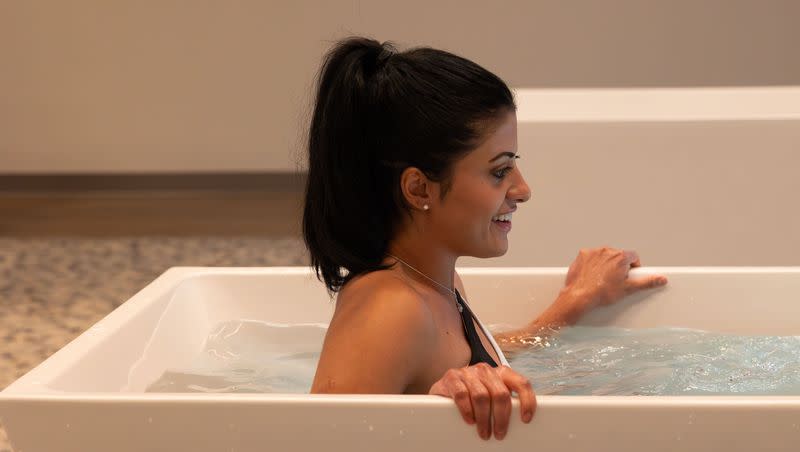Opinion: Cold plunges should be regulated. Here’s why

A Jan. 19 article published by the Deseret News entitled “Should cold plunge tubs be regulated in Utah? Here’s what a legislative committee decided” brought to light a very important issue that should be getting more attention than it currently has received.
As a physician with almost 20 years of experience in health care, I can honestly say that cold plunges should be regulated. In fact, they already are. Section R392-302-33 of the Utah regulatory code already outlines the specific use of hydrotherapy pools. In addition to normal pools regulations, hydrotherapy pools are “exempt from all other requirements of R392-302, only if use of the hydrotherapy pool is restricted to therapeutic uses and is under the continuous and direct supervision of licensed medical or physiotherapy personnel.”
The proposed legislation in SB106 would remove the requirements around cold pools in such a way as to present a real danger to consumers. Current regulations of pools are written to ensure that they will be used safely. This is why there are strict regulations around pools relating to design, function and cleanliness.
Therapy pools are regulated differently because they are supervised and attended by health care professionals. We apply these treatments within specific parameters to treat injuries. Possessing knowledge of how and why to implement these is critical.
When I was studying sports medicine at Brigham Young University, we had entire class modules around cryotherapy and how and why to apply such treatments. We also learned the contraindications, or why and how not to apply these treatments. Health care providers also undergo continuing education to remain aware of changes in guidelines and research around these topics.
Related
The rise in popularity of cold plunge therapy has coincided with an increase of misinformation. Peer-reviewed research does not support the broad claims that cold water immersion boosts testosterone, burns fat, improves immune function and a myriad of other ideas currently perpetuated. However, research does support the application of cold therapies for management of acute and chronic injuries.
More concerning than the claims of what a cold plunge may or may not benefit is the actual application of these therapies. Research shows that a longer exposure to a more moderate cold therapy has a greater effect than lower temperature for short duration. This is due to the depth of tissue penetration from the cold therapy.
For example, we know from research that regular ice (and even frozen peas!) are safer and more effective than chemical ice packs. This is because chemical ice packs are at a lower temperature with a higher risk of frostbite, but cannot be maintained on the skin long enough to get the same depth of tissue penetration that ice can with prolonged exposure.
Despite this knowledge, spas started perpetuating the idea that “cryo chambers” had the same or even superior therapeutic effect to cold therapies applied in clinics. Research has never supported these claims. Now spas want to have access to operating cold therapy pools without the knowledge and training on how to use them safely and effectively.
Similarly, spas began marketing “red light” therapy as a healing modality based on a misnomer of “low level laser therapy” as “red-laser” therapy. Low level laser therapy has been proven to improve tissue healing, but is regulated to be applied by health care professionals with appropriate training and licensing. These modalities are not available through spas because they lack the training and knowledge to use them correctly.
The facilities requesting deregulation of cold plunge pools are offering all these services under the guise of providing the health benefits found in actual health care practices. Effectively, what they are doing is practicing medicine without a license. If they want to have the ability to provide proven therapeutic modalities such as low level laser therapy or cryotherapy, they should be subject to the same existing regulations as the health care practices that currently exist.
Dr. James Eagar has practiced sports medicine for the last 18 years. He has worked in collegiate athletics (Brigham Young University and Utah Valley University), Boeing Aviation and in private clinical practice. He holds multiple professional degrees and certifications and has experience as a teacher and preceptor for other health care providers.

